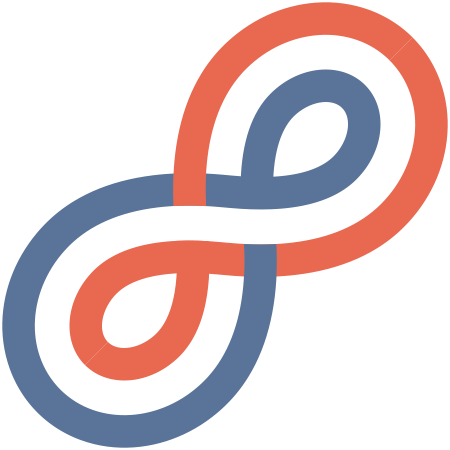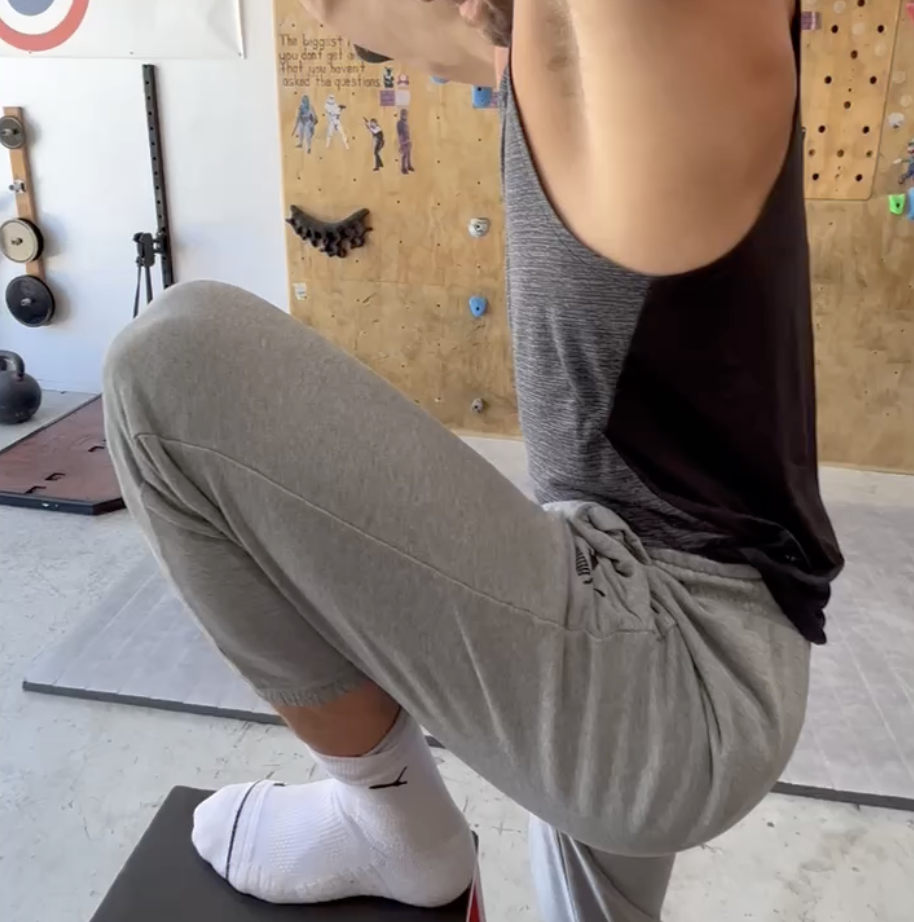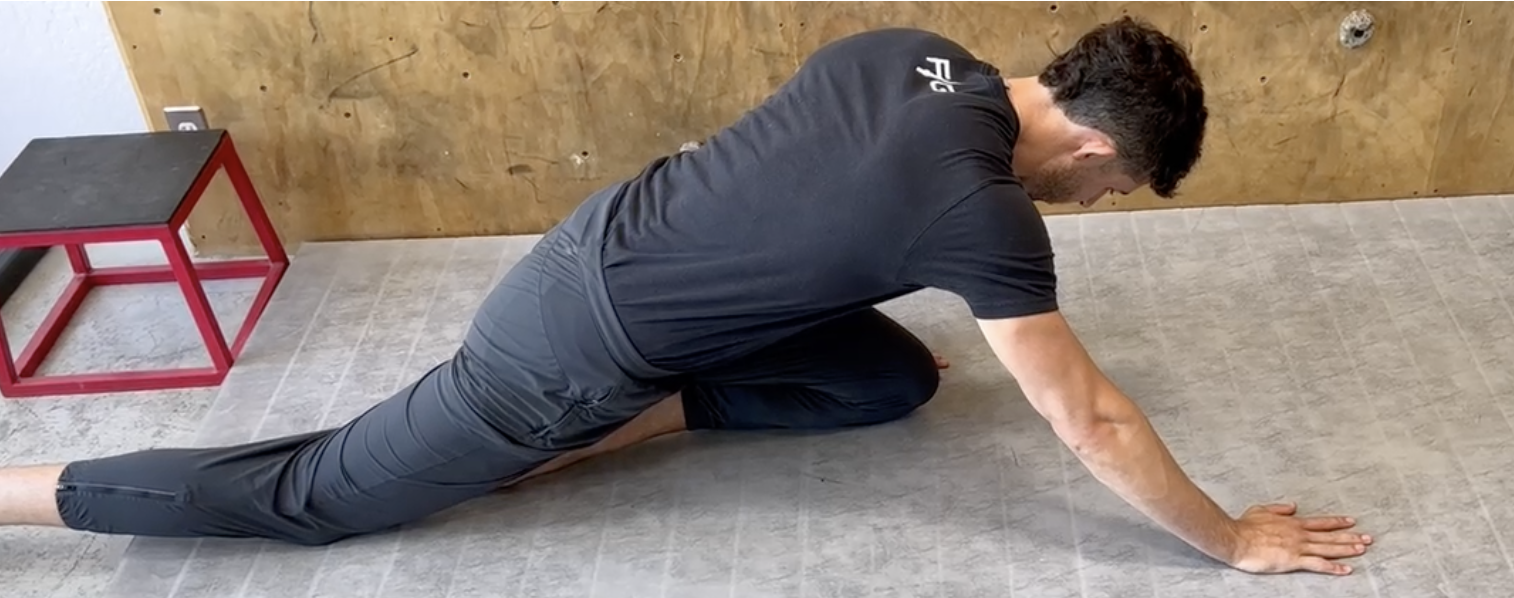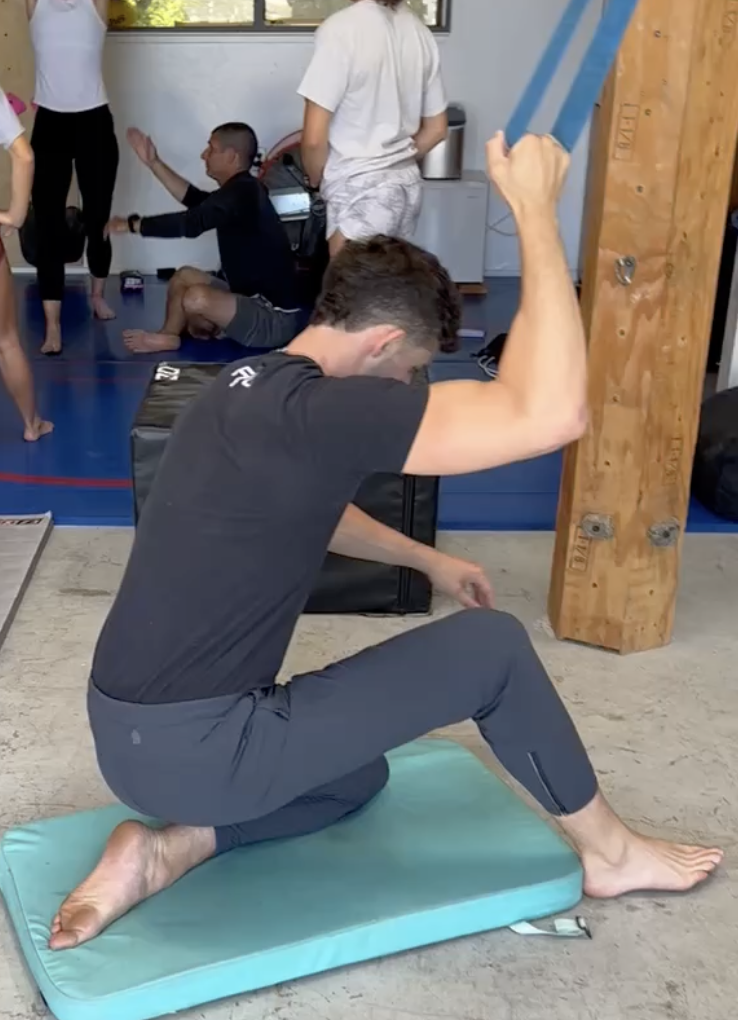Exploring Tendon Health: Pain Relief and Performance Enhancement
There’s no magic recipe for helping tendons feel better. But there are a few well-studied strategies that make a short list of things to try.
My tools are four variables.
Load:
Light weight for a long time
One to three minutes of tension, per set, 4+ sets.
Heavy weight for a short time
Greater than 70% 1RM, 5-12s of tension per rep, 4+ sets, 3+ reps
Length:
Longest muscle length
Shortest muscle length
Eventually, I want the athlete to lift heavy through the entire range of motion, but one of the above combos is our starting point. From there, we iterate and progress. Along the way, you can do eccentric, isometric, or concentric contractions and still build a more dense tendon. (Isometrics are usually the most accessible for everyone.) And a dense tendon is less likely to hurt and rupture.
Each person’s tendon has likes and dislikes. It is your job to discover what those are through different movement experiments. Try various combinations of the above variables. Add in low-intensity plyometrics for 10-30s at a time. Note what you’ve done and observe what happens over the next 24-48 hours. Then adapt or continue your experiment for two to four weeks. Through these iterations, you get to know the tendon and you can pave a unique path to your success.
If nothing’s working, I’ll explain what to do later.
The Hardest Part
I tell everyone who asks for help with their tendons, “This requires a lifestyle change. You need to load your tendon every two to three days for at least three months. Then, we can space it out and see how your tendon responds. Still, you can’t stop this program for a year, even if you feel better in two weeks. It takes that long for tendons to change.”
Your tendon will take at least twelve weeks to show a measurable change. But, if you find the right combo of load, length, and position, how you feel can improve in a day or fortnight. If you don’t start feeling slightly better in a few weeks, adjust one of the above variables and see if you can get better results.
Necessities: Creativity & Novelty
Pain is complicated. Sometimes, it is a prediction, a warning sign emitted by your noggin when it perceives danger is nigh. So what if you give it a movement it’s never done before? Can it predict pain?
Sometimes yes, sometimes no. But we must find out. Finding out means stepping away from traditional lifts, ones you have done countless times before and are predictable, and exploring relatively new movements. Or it means we do the traditional lifts but in a new way. Either way, we do things that are more unpredictable.
The creativity comes with how you train the specific length of the muscle. There are more things than a pistol squat to get the longest length of your quad.
For knees, one of my favorite movements is a deep crawl. It’s challenging enough, novel, and usually helpful. If it is, I suspect more long-range positions are needed, and we progress to a half-kneeling squat—just the bottom range. If that goes well, we do a high step-up, but only the bottom range, which adds complexity by including the ankle joint and ups the intensity because the entire body now rests on one leg.
You’ll notice one thing that’s missing: speed. Speed makes things worse, usually. If jumping made tendons feel great, zero jumpers or runners would have tendon pain.
If the athlete is in her off-season, we may remove speed or greatly reduce it. If she is in season, it’s essential to include and manage. But it may slow our progress. (I want to keep speed if we can. Speed tolerance is vital.)
Having dense and stiff tendons is a good thing. Heavy lifting does that. Plyometrics do not increase tendon density. But they do create useful muscular stiffness and coordination. For example, my left Achilles bothered me after I played in my alumni game (volleyball). As I problem-solved it, my tendon needed heavy lifting through bent and straight knee heel raises and low-intensity plyometrics.
I would hop on one leg, about two inches off the ground, for three sets of thirty seconds, trying to get off the ground as quickly as possible. That, combined with the heavy lifting, made my Achilles feel better. When I ran, it felt like I improved my timing and muscular stiffness—my foot and lower leg became better prepared to recoil off the ground in less time. Without that timing and stiffness, my ankle bent a lot, lengthening and stressing my Achilles.
When Nothing Works
These four variables have helped innumerable Apiros athletes. When they haven’t, it’s because I’ve missed a puzzle piece. The athlete needed to be in a different position and load a different muscle.
Storytime: I once had bicep tendon pain at my elbow, and I followed my principles to no effect. Rather than perpetuate ineffective protocols, I tried loading a different elbow flexor: my brachioradialis. I used a 10-15lb club and did eccentric pronation. That cleared up my bicep pain almost immediately.
So, understand your anatomy so you can adapt your loading scheme to different muscles, tendons, and varied positions.
One athlete thought he had Achilles pain, and it seemed likely. But after lots of failed experiments, I wondered if it was something else. Turns out, he had an issue with another tendon that ran parallel to his Achilles: his flexor hallucis longus. Changing how he loaded and moved his big toe solved his issues. Continuing to believe the problem was his Achilles, because pain was in that area, did nothing.
Tendons can be stubborn to change, but pain doesn’t have to be. These four variables, plus a high expectation for quick improvement, have resulted in an extremely high success rate with people’s tendons. And it’s the removal of pain, more than a dense tendon, that gets people playing again. But a dense tendon is what keeps them on the field.
This blog post is one small part of what I teach in my course. In the online mentorship, you’ll spend at least a week on tendons and see several other case studies so you master these problems. In the in-person course, you get a crash-course on the fundamentals that transform your practice in three days.
Citations
Bohm, Sebastian, Falk Mersmann, and Adamantios Arampatzis. "Human tendon adaptation in response to mechanical loading: a systematic review and meta-analysis of exercise intervention studies on healthy adults." Sports medicine-open 1, no. 1 (2015): 1-18.
Kubo, Keitaro, Tomonobu Ishigaki, and Toshihiro Ikebukuro. "Effects of plyometric and isometric training on muscle and tendon stiffness in vivo." Physiological reports 5, no. 15 (2017): e13374.
Magnusson, S. Peter, Henning Langberg, and Michael Kjaer. "The pathogenesis of tendinopathy: balancing the response to loading." Nature Reviews Rheumatology 6, no. 5 (2010): 262-268.






